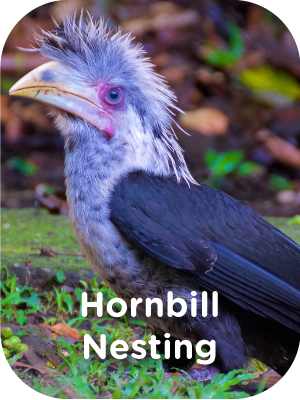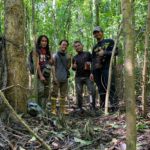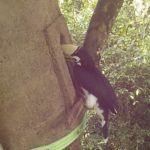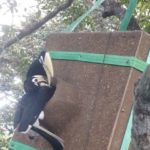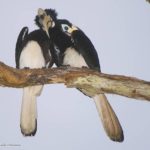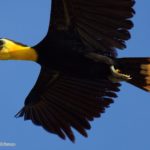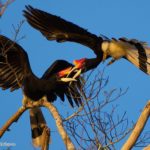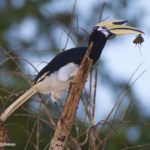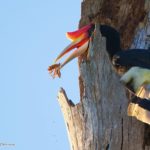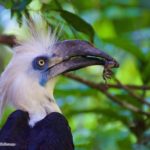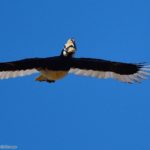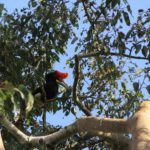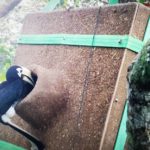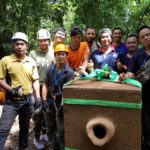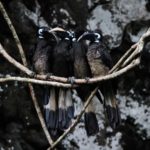Target species:
Helmet Hornbill (Rhinoplax vigil) – IUCN status: Critically endangered
White–crowned Hornbill (Berenicornis comatus) – IUCN status: Endangered
Rhinoceros Hornbill (Buceros rhinoceros) – IUCN status: Vulnerable
Black Hornbill (Anthracoceros malayanus) – IUCN status: Vulnerable
Wreathed Hornbill (Rhyticeros undulatus) – IUCN status: Vulnerable
Wrinkled Hornbill (Rhabdotorrhinus corrugatus) – IUCN status: Near threatened
Oriental Pied Hornbill (Anthracoceros albirostris) – IUCN status: Least Concern
Bushy-crested Hornbill (Anorrhinus galeritus) – IUCN status: Least concern
MSc Candidate: Ashraft Syazwan Ahmady Yusni
Supervisors: Dr. Liew Thor Seng, Prof. Benoit Goossens, Dr. Ravinder Kaur
Insitution: Universiti Malaysia Sabah
Sabah is home to eight different hornbill species, seven of which show a decline in their population. All eight species are present in the Lower Kinabatangan Wildlife Sanctuary (LKWS). Hornbills are effective seed dispersers and therefore play a vital ecological role in the ecosystem as they promote the regeneration of the forest.
Hornbills require big trees with cavities to nest in, but they cannot create their nest cavities like woodpeckers do. They often spend months searching for a suitable nesting tree. If an appropriate place is not found they might not breed that year or are forced to use less suitable nesting sites that are more exposed to predators (lower cavities for example). Once a nesting site has been selected, the breeding couple usualy reuses it in the following breeding seasons. This creates nest site competition, making it harder for younger couples to find a suitable nest site in an area where big trees are quickly disappearing.
The degradation of the forest in the LKWS has provoked a decline in suitable trees for Hornbills to nest in. This decline has been driven by the conversion of forest into oil palm plantations and the human impact on the remaining forest (such as an increase in illegal logging and reating hunting trails for poaching). For a tree to grow to an adequate size to serve as a nest site for Hornbills, it may require many years and also the contribution of other species to create a cavity (such a sun bears, pangolins, woodpecker and bees). Therefore it can take a long time to promote and provide natural nesting sites for Hornbills.
Given the lack of appropriate nesting trees for Hornbills in the area, this project aims to provide nesting places for these birds, while alongside work on habitat protection and restoration through our Regrow Borneo project.
Through video monitoring we can see the response of the birds to the boxes and make improvements based on what we observe, helping us to improve our box designs and placement. Having functional Hornbill nest boxes will provide nesting support for the species in areas of the LKWS where big trees are disappearing or where new planted trees are still too small. Helping to maintain the population over time and will contribute to regeneration of the forest through the Hornbills ecological service (seed dispersal).
For more information about Hornbills and our work with nest boxes check our Hornbill episode of Borneo Jungles Diaries
Collaborators:
HUTAN
GAIA
Sponsors:
DGFC
HUTAN
GAIA

